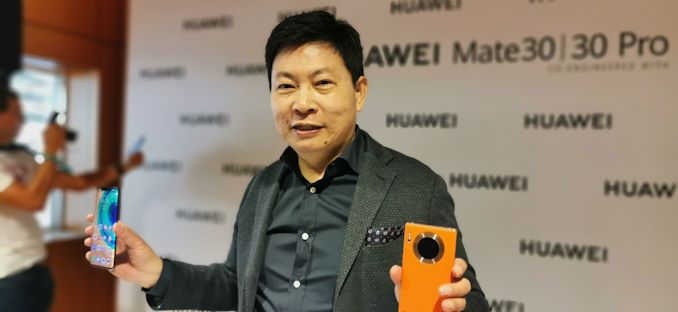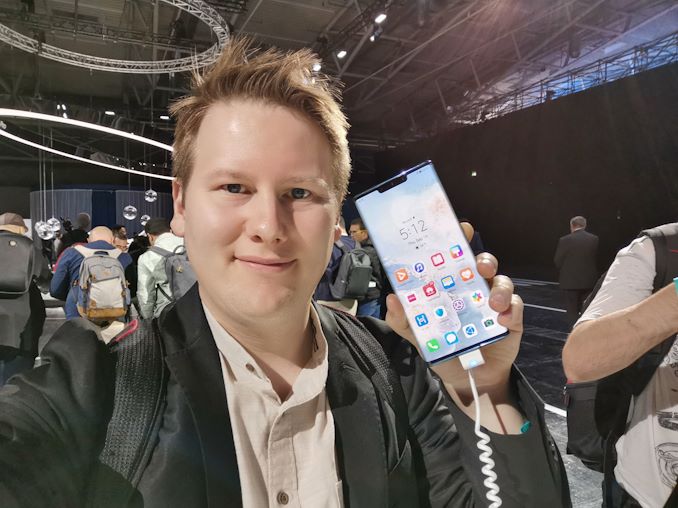A Day with the Huawei Mate 30 Pro: Kirin 990 and 7680 FPS Slow Motion Tests
by Dr. Ian Cutress on September 23, 2019 4:00 AM EST- Posted in
- Smartphones
- Huawei
- Kirin 990
- Mate 30 Pro
- 7680fps
Final Thoughts
The big question on everyone’s lips is whether Huawei can survive without the Play Store, and then in turn, without Google’s main apps like Gmail, YouTube, or Maps.
To address things first, no, Google Play Store cannot be side loaded. It requires Google’s Mobile Services (GMS), which are not enabled on the new Huawei smartphones. Huawei will not give users directions on how to install GMS, however we are expecting them to unlock the boot loader to give users kernel access. Also, Huawei has officially stated that they will not instruct retailers to give directions how to get around it, though retailers are more than welcome to help users get around that issue, but Huawei will not assist.
If the US-China issue is solved, the CEO has stated that they are able to reinstate GMS and Google’s Apps overnight. Until that point, users are directed to Huawei’s own app store (called App Gallery), and other app stores, that contain the most popular applications (Facebook, Instagram, Whatsapp – these apps can be sideloaded from apks anyway). Huawei is putting $1B into enhancing its own app store, to encourage developers to create applications for Huawei.
Until it gets sorted out, Huawei’s recommendations for anyone wanting to use Google Apps is simple: most of the applications can be accessed through the web. Gmail, Photos, Docs, Calendar, Maps, and others all have their own web interfaces, and so users could just create shortcuts on the main screen to these websites. For certain things like Google Fit, or Google Drive, it gets a bit more complex. Unfortunately,
I don’t think that the lack of Google’s apps is the main issue here – it’s the lack of the Play Store. Even though most casual users flip between the same few basic applications, when it comes to things like Evernote, Uber/Lyft, Otter, BBC News, VLC, Dropbox, Airline apps, I’m going to have to side load them all, and there’s no guarantee of continual updates. It’s going to be a pain. Add on top of that, there is no Google Pay, which I’ve started to use frequently.
Could I use the Mate 30 Pro without the Play Store as a daily device? I believe so – I think I could manage for the most part, and for the few items that won’t work, I would have to find alternatives. But ultimately it’s a high bar to entry, and I would have to spend an hour or two with the device making sure I have my primary apps installed from the beginning.
As for the features of the smartphone, I like the display, although aside from removing the side bezels, there isn’t much use for the wrap-around nature. Not having a physical volume key isn’t a problem for me, and my grip on the phone ultimately hasn’t changed much. It would be interesting to have it in a case, given that I almost always use a case, and to see if that affects anything. The display is bright, and the size is good, and the performance seems more than adequate. Assuming the software ecosystem can come into play here, the device handles itself really well.
For the photography, this early sample (non-final software) is a bit hit and miss. The standard photos don’t look as great as my P30 Pro, which might be down to the P in P30 standing for photography. But that slow motion 7680 fps mode on the Mate 30 Pro is great. As long as you have enough light and can time it just right, this smartphone can easily provide a good slow motion camera if you are happy with the 720p resolution.
Huawei is set to launch the Mate 30 Pro in October, starting with China and a few select European countries. Other EU areas will come through Q4. Huawei will make other announcements about the Middle East and Latin America in due course, but has promised to release it there as well. Also upcoming is the 5G version, which is likely to show up further into Q4, at least in China to begin with. The 8 GB/256 GB model will retail for 1099 Euro, with the 5G version having the same specifications for 1199 Euro.
We will have a full proper review of the Kirin 990 chipset and the Mate 30 Pro, including display testing, full benchmarks, and battery life testing, over the next few weeks.













47 Comments
View All Comments
s.yu - Tuesday, September 24, 2019 - link
Andrei should definitely look into this.Haldi - Wednesday, October 9, 2019 - link
Seems like it has AI which helps you start recording at the perfect time, similar to Samsung.One thing I really miss one my XZ2 sometimes.
peevee - Tuesday, September 24, 2019 - link
" and other app stores, that contain the most popular applications (Facebook, Instagram, Whatsapp"And youtube or google maps are not as popular? BS. An Android phone without them is as good as useless.
SanX - Tuesday, September 24, 2019 - link
Add for comparison ASUS ROG II 12GB RAM 1TB storage, 6000 mAh battery, other processor phones like UMIDIGI latest phone with Mediatek Heliomaryammiahan - Thursday, September 26, 2019 - link
Thanks for this Post I think huawei mate 30 pro going to be a big hit and its camera features are most demanding features in smartphone.Cod3rror - Saturday, September 28, 2019 - link
Regarding the "Position 2: Clock Tower" picture. The auther says "however the Mate 30 Pro is a bit more hazier with less detail". I agree it's more hazy, but it definitely has more detail than P30 Pro.I am very impressed by Mate 30 Pro's details.
Haldi - Wednesday, October 9, 2019 - link
Ugs REALLY? I can do math myself...I know that 32 seconds on 30fps equal 960 frames in those 0.125sec which would be around 7680 frames in one Second...
But the Question is HOW?
You remember the Sony sensor which first made 960fps possible? They said it's impossible to render frames so fast, so they included onboard RAM on the sensor itself and transfer the data later.
The first Huawei phone which did 960fps simply recorded 240fps and used motion interpolation to upscale it to 960fps.
How can we be certain they didn't do anything similar here?
What kind of hardware tricks did they use to process 960 pictures in 0.125 seconds? Is the bus from Camera to cpu fast enough for that much data?
If so how comes we're limited to 0.125s why not use 0.25sec and 4gb of RAM?